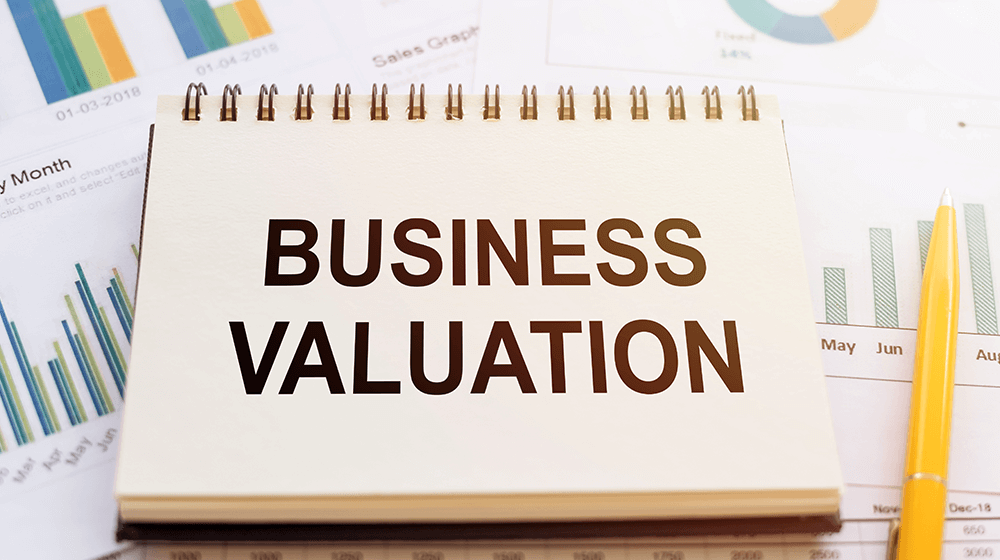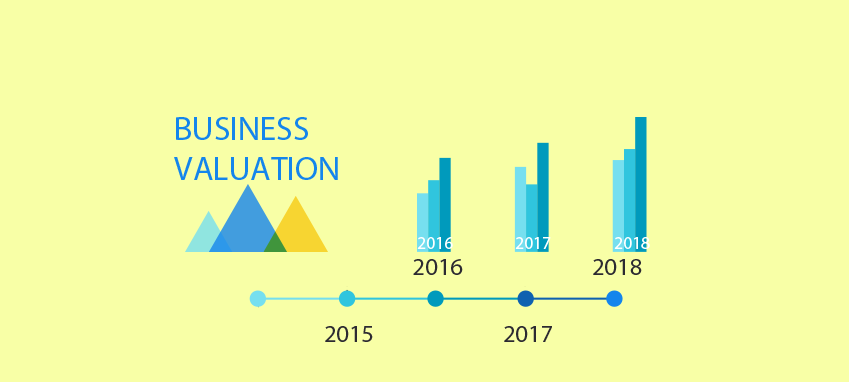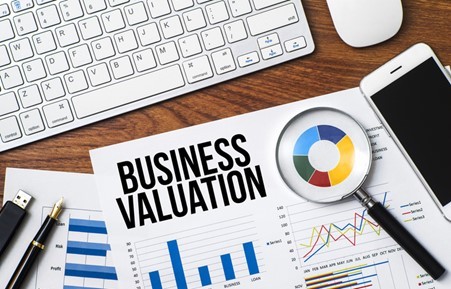Valuing a business is a multifaceted process that requires extensive research, thorough analysis, and a deep understanding of the market landscape. Whether you’re an entrepreneur looking to sell your business, acquire a new venture, or simply ascertain the current worth of your enterprise, an accurate business valuation is crucial for making informed, strategic decisions.
At Venture Care, we pride ourselves on our expertise in creating top-tier investment materials, including comprehensive independent valuation reports. These reports are crafted using sophisticated software, big data analytics, and five distinct valuation methods. We also offer a wealth of free resources to entrepreneurs seeking investment, such as our Business Valuation Calculator—a downloadable template designed to assist you in valuing your business using the Venture Capital (VC) method. Beyond valuation, we can help you secure investment by refining your pitch to potential investors.
Below, we present a detailed, step-by-step guide to the essential components of business valuation.
Understanding Business Valuation

Business valuation is a vital process that determines a company’s economic value. Typically conducted by professional valuers, it involves a meticulous examination of a business’s financial performance, assets, liabilities, and market position. The outcome is an estimated price at which the company could be sold, providing critical insights for various business decisions.
Valuations are necessary in various scenarios, such as when a business owner intends to sell, during mergers or acquisitions, or when seeking to raise capital from investors or lenders. By accurately understanding their business’s value, entrepreneurs can make strategic decisions regarding growth, expansion, and long-term sustainability.
The Importance of Valuing Your Business
Knowing the value of your business is essential for several reasons:
- Investment and Funding: When seeking funding from investors or venture capitalists, understanding your business’s value allows you to negotiate favourable terms and avoid giving away excessive equity.
- Strategic Planning: A precise valuation helps make informed growth and expansion decisions. If your business’s value is lower than expected, it may indicate the need to reassess your strategies. Conversely, a higher-than-expected valuation might prompt you to consider selling the company or attracting additional investors.
- Sale of Business: If you’re contemplating selling your business, knowing its value is critical to ensuring you receive a fair price.
Factors Influencing Business Value

A myriad of internal and external factors shape the value of a business. These can be broadly categorised into the following:
Tangible Assets
Tangible assets include physical items such as buildings, land, equipment, inventory, and vehicles. These assets are significant in determining a company’s value as they can be sold or used to generate income. A business with substantial tangible assets is often considered a secure investment, making it more appealing to potential buyers.
Intangible Assets
Intangible assets, though non-physical, play a crucial role in business valuation. These include patents, trademarks, copyrights, and goodwill—encompassing the brand’s value, customer base, and reputation associated with its intellectual property. While not easily quantifiable, intangible assets can significantly impact a business’s overall valuation.
Financial Records

A business’s financial records provide a window into its profitability, liquidity, and overall economic health. Companies with vital financial records—evidenced by consistent revenue growth, low debt-to-equity ratios, and healthy profit margins—are valued more than those with weaker financial standings.
Sector
The industry in which a business operates can significantly influence its value. Companies in high-growth sectors such as technology, healthcare, or renewable energy often command higher valuations due to their potential for future profitability and expansion.
Human Capital
The people within a business, including its leadership team and employees, can also significantly impact its value. Companies with strong leadership and a talented workforce are generally perceived as more valuable and better positioned for long-term success.
Methods for Valuing a Business
Several methods are used to value a business, each with its principles and applications. Below are some of the most commonly employed valuation methods:
Discounted Cash Flow (DCF) Analysis

DCF Analysis is a widely accepted valuation method that estimates a company’s future cash flows and discounts them back to their present value. This method accounts for the time value of money and the risks associated with future cash flows, making it a reliable approach for many businesses.
Comparable Company Analysis (CCA)
Comparable Company Analysis involves comparing the business to similar recently sold companies within the same industry. This method uses financial metrics such as revenue, earnings, and multiples to arrive at an estimated value.
Precedent Transaction Method
This method is similar to Comparable Company Analysis but focuses on companies involved in mergers. The premium paid for such transactions is used to estimate the value of the business being assessed.
Industry Best Practices

This approach uses key performance indicators, benchmarking, and other industry-specific metrics to determine a business’s value. It benefits companies with complex operations, such as manufacturing or technology.
Entry Valuation
Entry Valuation is used for startups or businesses that have yet to generate revenue. It estimates the business’s value based on its growth potential, market size, and other relevant factors.
Asset Valuation
Asset Valuation involves summing the value of all the company’s tangible and intangible assets. This method is often applied to businesses with significant assets, such as real estate or intellectual property.
Times Revenue Method

The Times Revenue Method is a straightforward approach where a business’s revenue is multiplied by an industry-specific multiple to determine its value. This method is beneficial for small companies with predictable revenue streams.
Price/Earnings (P/E) Ratio
The P/E ratio compares a business’s price to its earnings per share. This method is commonly used for publicly traded companies and can provide a quick snapshot of the business’s value.
Venture Capital (VC) Method
The VC Method is tailored for early-stage companies. It involves estimating the future exit valuation, typically 5-10 years out, and discounting it to the present to determine the current investment value.
Simplifying Business Valuation

The Times Revenue Method is often the simplest and quickest way to estimate value for small businesses. By multiplying the business’s revenue by an industry-specific multiple, you can arrive at a rough estimate of the business’s worth. However, it’s crucial to remember that this method provides only a general approximation and should be used alongside other valuation methods for a more accurate assessment.
Similarly, the P/E Ratio offers a quick and straightforward way to value a business, particularly for publicly traded companies. However, like the Times Revenue Method, it should not be relied upon exclusively, as it does not account for many factors that could influence the business’s actual value.
Practical Valuation Examples
Example of Asset Valuation:
Consider a manufacturing company that produces furniture. To use the Asset Valuation method, you would first estimate the current market value of the company’s assets, such as its factory, equipment, and inventory. Subtracting the company’s liabilities, like outstanding debts and taxes, will yield the net asset value.
For instance, if the assets are valued at $1 million and the liabilities are $200,000, the company’s net asset value would be $800,000.
Example of Times Revenue Valuation:
Imagine you’re valuing a digital marketing agency with a revenue of $500,000 last year. Using the Times Revenue Method with an industry multiple of 2, the agency’s value would be a million ($500,000 x 2). If a higher multiple of 3 is applied, the valuation would be $1.5 million ($500,000 x 3).
Example of Price-to-Earnings Valuation:
Let’s take a hypothetical software development company, Asimov Ltd. The company has an EPS of $2.50 per share, trading at $25 each. The P/E ratio would be 10 ($25/$2.50), indicating that investors are willing to pay ten times the company’s earnings per share.
If we project an EPS of $3.00 for the next fiscal year and apply the same P/E ratio, the estimated value per share would be $30. This figure would be multiplied by the total number of shares to determine the total company value.
Maximising Your Business Valuation
A firm business valuation is crucial for securing financing, attracting investors, and planning for future growth. Here are some strategies to ensure you obtain an optimal valuation:
Develop a Robust Business Plan

A comprehensive business plan articulates your vision, objectives, and strategies. It should also include detailed financial projections, which are fundamental to the valuation process. A clear and realistic business plan can significantly enhance the perceived value of your business to potential investors and buyers.
Maintain Accurate Financial Records
Accurate financial statements are crucial to demonstrating your business’s profitability and sustainability. Ensure your balance sheets, income statements, and cash flow statements are current and reflect your business’s financial health.
Mitigate Risks
Identifying and addressing potential financial, legal, operational, or reputational risks can positively impact your business valuation. Strong governance, robust risk management strategies and appropriate insurance can all help.
Build a Strong Leadership Team

Build a solid, experienced leadership team to drive the business forward. A competent management team increases confidence in the business’s long-term prospects and positively influences valuation.
Expand Your Market Reach
Expanding your market reach—geographically or through new products/services—can demonstrate growth potential and significantly boost your business’s valuation.
Focus on Customer Retention
A loyal customer base is an invaluable asset that adds significant value to your business. Implementing effective customer retention strategies and maintaining high customer satisfaction levels will benefit your valuation.
Enhance Your Brand Reputation

A strong brand reputation enhances customer loyalty and increases your business’s perceived value. Build a positive brand image through consistent quality, customer service excellence, and effective marketing strategies.
Conclusion
A precise and accurate business valuation is the cornerstone of strategic decision-making, whether planning to sell your business, attract investors, or guide your company’s growth. Understanding the different valuation methods and applying them appropriately ensures that your business is valued fairly and accurately.
At Venture Care, we offer tailored valuation reports that comprehensively analyse your business’s worth. Our expert team is on hand to guide you through every step of the process, ensuring that you receive the best possible outcome. Whether you are a small business owner or a seasoned entrepreneur, our insights and resources will empower you to make informed decisions that drive your business forward.












